H+H International A/S
CSE:HH

| US |
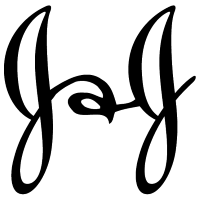
|
Johnson & Johnson
NYSE:JNJ
|
Pharmaceuticals
|
| US |
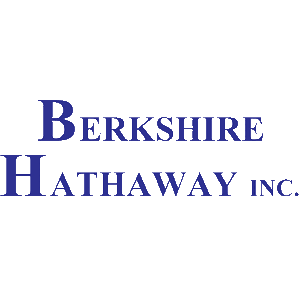
|
Berkshire Hathaway Inc
NYSE:BRK.A
|
Financial Services
|
| US |
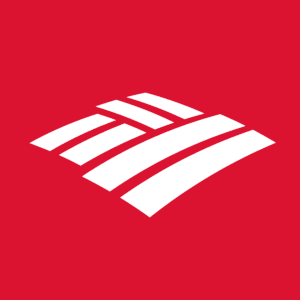
|
Bank of America Corp
NYSE:BAC
|
Banking
|
| US |

|
Mastercard Inc
NYSE:MA
|
Technology
|
| US |

|
UnitedHealth Group Inc
NYSE:UNH
|
Health Care
|
| US |

|
Exxon Mobil Corp
NYSE:XOM
|
Energy
|
| US |
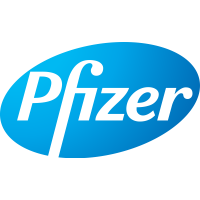
|
Pfizer Inc
NYSE:PFE
|
Pharmaceuticals
|
| US |

|
Palantir Technologies Inc
NYSE:PLTR
|
Technology
|
| US |

|
Nike Inc
NYSE:NKE
|
Textiles, Apparel & Luxury Goods
|
| US |

|
Visa Inc
NYSE:V
|
Technology
|
| CN |

|
Alibaba Group Holding Ltd
NYSE:BABA
|
Retail
|
| US |

|
JPMorgan Chase & Co
NYSE:JPM
|
Banking
|
| US |

|
Coca-Cola Co
NYSE:KO
|
Beverages
|
| US |

|
Walmart Inc
NYSE:WMT
|
Retail
|
| US |

|
Verizon Communications Inc
NYSE:VZ
|
Telecommunication
|
| US |

|
Chevron Corp
NYSE:CVX
|
Energy
|
Utilize notes to systematically review your investment decisions. By reflecting on past outcomes, you can discern effective strategies and identify those that underperformed. This continuous feedback loop enables you to adapt and refine your approach, optimizing for future success.
Each note serves as a learning point, offering insights into your decision-making processes. Over time, you'll accumulate a personalized database of knowledge, enhancing your ability to make informed decisions quickly and effectively.
With a comprehensive record of your investment history at your fingertips, you can compare current opportunities against past experiences. This not only bolsters your confidence but also ensures that each decision is grounded in a well-documented rationale.
Do you really want to delete this note?
This action cannot be undone.

| 52 Week Range |
69.3
137.6
|
| Price Target |
|
We'll email you a reminder when the closing price reaches DKK.
Choose the stock you wish to monitor with a price alert.

|
Johnson & Johnson
NYSE:JNJ
|
US |

|
Berkshire Hathaway Inc
NYSE:BRK.A
|
US |

|
Bank of America Corp
NYSE:BAC
|
US |

|
Mastercard Inc
NYSE:MA
|
US |

|
UnitedHealth Group Inc
NYSE:UNH
|
US |

|
Exxon Mobil Corp
NYSE:XOM
|
US |

|
Pfizer Inc
NYSE:PFE
|
US |

|
Palantir Technologies Inc
NYSE:PLTR
|
US |

|
Nike Inc
NYSE:NKE
|
US |

|
Visa Inc
NYSE:V
|
US |

|
Alibaba Group Holding Ltd
NYSE:BABA
|
CN |

|
JPMorgan Chase & Co
NYSE:JPM
|
US |

|
Coca-Cola Co
NYSE:KO
|
US |

|
Walmart Inc
NYSE:WMT
|
US |

|
Verizon Communications Inc
NYSE:VZ
|
US |

|
Chevron Corp
NYSE:CVX
|
US |
This alert will be permanently deleted.





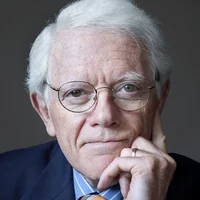






























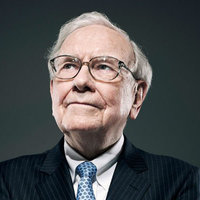
Welcome to the H+H International AS Interim Financial Report for Q1 2021. [Operator Instructions] I'll now hand the floor to our speakers. Please begin.
Good morning, and welcome to H+H's conference call for the first quarter of 2021. My name is Andreas Holkjær, Investor Relations and Treasury Manager. Joining me on this morning's call is our CEO, Michael T. Andersen; and our CFO, Peter Klovgaard-Jørgensen. The interim financial report for Q1 2021 was released on Wednesday last week and uploaded to our Investor Relations website, and the presentation slides for this morning's conference call were made available prior to the call. During today's call, management will present the interim financial report, after which there will be a Q&A session. Please note that this conference call is being recorded and will be made available on our Investor Relations website after the call. Before handing over the call to Michael and Peter, I would like to direct your attention to the disclaimer on Page 2. During today's call, the Executive Board may make certain forward-looking statements regarding various matters related to our business and company that are not historical facts. Such statements are based upon the current expectations and assumptions and are therefore subject to certain risks and uncertainties. Many factors could cause actual results to differ materially. For further information about the risk factors, please see the annual report for 2020. And with that, I will now turn the call over to Michael.
Thank you, Andreas, and good morning to everyone participating in this call. Today, I will go over through few highlights from the quarter and our sales volumes before moving to an update on the different markets. Peter will then provide additional color on the financial performance for the quarter as well as our financial expectations for the full year 2021. Now please turn to Page 3. While the first quarter of 2021 turned out to be solid for our U.K. business, the Central Western Europe region and Poland were hit by the strongest weather impact in a decade. Organic growth was negative 9%, mainly driven by lower sales volumes due to the poor winter weather. EBITDA amounted to DKK 109 million for the quarter, corresponding to an EBITDA margin of 17%. As mentioned, EBITDA was adversely impacted by lower sales volumes, partly driven by the harsh weather conditions, but also by production standstills across certain plants. These were partly caused by the cold temperatures, which made production of certain Polish and German CSU plants impossible as well as maintenance breaks in Germany. Further impacting our Q1 EBITDA were higher input costs, which Peter will come back to later in the presentation. EBIT amounted to DKK 64 million, which equals an EBIT margin of 10%. Free cash flow for the quarter was negative by DKK 32 million, mainly driven by seasonal net working capital movements. Return on invested capital was 16% and remains above our long-term financial target. The financial gearing increased to 0.6x EBITDA, mainly as a result of a higher net debt due to the negative free cash flow and the purchase of treasury shares in connection with the ongoing share buyback program. Now please allow me to comment on our sales volumes in the quarter on Page 4. As mentioned, Q1 2021 sales volumes were adversely impacted by harsh winter weather across Western Europe and Poland. The impact of the winter weather during January and February was the strongest that we have seen in a decade. More specifically, sales volumes declined by 11% year-on-year to 960,000 cubic meters. This was the main driver of the relatively lower revenue and negative organic growth in the quarter. The impact was, however, partly offset by modest price increase across most segments as a result of our continued pricing strategy. The exception was the Polish CSU business, which remains characterized by pricing pressure and completion.Next, I will go over our core markets, starting with the Central Western Europe region on Page 5. Germany, and as previously communicated, the European housing market is still expected to continue growing through the structural undersupply -- due to the structural undersupply of housing, demographic growth and urbanization. However, the harsh winter weather during January and February adversely impacted construction activity levels due to very low temperatures and several days with snowfall, especially in Germany and Poland. In Germany, the construction market remains relatively unaffected by the COVID-19 pandemic. A significant lack of housing, especially in the larger cities, provides a solid demand outlook for both AAC and CSU. This is driven by a growing number of smaller households as well as considerable number of immigrants entering the country over the recent years. In January, almost 12,000 new building permits were granted, representing an increase of 10% compared to January 2020. This was mainly driven by increase in the number of building permits in the low-rise segment. A significant pipeline of committed buildings awaiting realizations persist due to continued lack of installation capacity and available land causing order backlogs among housebuilders to grow considerably. As the country is facing a continued undersupply of housing, the German government is seeking to cope with these challenges through different stimuli programs. These include programs aimed at providing incentives to homeowners as well as the availability and development of land. However, the effect of these programs appears insufficient to convince builders to invest in overcoming the labor challenges, putting on growth in the German construction industry. Turning to the other markets in CWE region. Denmark is seeing an increased demand for housing and holiday which has led to further growth, especially in the segment for family housing. And finally, the Swiss and Benelux markets are continuing to show positive signs with good demand outlooks in both markets. Turning now to the U.K. market on Page 6. The British government remains committed to increasing the housing output to 300,000 dwellings annually, but the exact road map towards this target remains unclear. Several government stimuli programs are in place, seeking to cope with the challenge of the structural undersupply of housing. These include the recent extension of the help-to-buy program, which continues to assist the first-time buyer market. In addition, the stamp duty holiday increases the threshold for stamp duty and further support to the housing markets until its gradual expiry in September 2021. The U.K. market is reacting well to the government support programs with extraordinary high forward sales reported from volume housebuilders, and this trend has continued into the second quarter of 2021. As an example, Barratt has recently reported that they are sold out for the remainder of 2021 and that they are substantially more forward sold for 2022 than at the same point in 2019 for planned 2020 home completions. Further, Miller Homes is 100% sold out for the remainder of the year and 86% sold out for the first quarter of the next year. These data points point to the strong activity among U.K. housebuilders. The private housing market is also showing high activity levels, driven by general shortage of housing and relocations to larger properties outside the big cities. This trend has slightly been accelerated as a result of the COVID-19 pandemic. Generally, the activity seen in the first quarter of 2021 has been meaningfully higher than in the same period of 2020, which, of course, was pre-COVID-19. In combination, these trends are pointing to a recovery of the U.K. housing market, which is expected to proceed faster than previously expected with a potential return to the historic high levels of 2019 already in 2021. Before turning the call over to Peter, please turn to Page 7 for an update on the Polish market. The Polish construction market also continues to be relatively unaffected by the COVID-19 pandemic. The overall macroeconomic outlook is positive with an expected positive GDP growth in 2021 despite a third wave of COVID-19 in the country. An increase in the number of permits and started buildings in Q1 2021 indicates a positive demand outlook in the medium term. According to third-party data provided, the number of permits increased by 42% in Q1 2021 relative to Q1 2020, driven by increases in the number of permits for both developers and for individual investors. This increase is expected to only have a minor impact in 2021 due to the lead time from permit to wall building, but the medium-term demand outlook is positive. The Polish CSU market remains characterized by competition and price pressure due to the addition of capacity in 2020. H+H has benefited from the market consolidation achieved in 2018 and has been able to utilize its differentiated product offerings to partly mitigate the impact and maintain its strong customer relationships. In the AAC market, pricing is following a positive trend due to the overall positive development in demand and a moderate competitive environment. This concludes my prepared remarks, and I will now turn the call over to Peter for an update on our financial performance in Q1 2021.
Thank you, Michael, and also welcome from me. Please allow me to take you through the numbers for Q1 2021, starting with a summary of our financials on Page 8. As Michael mentioned, the harsh winter weather in January and February adversely impacted our financial performance in the first quarter. However, the year-on-year decline in most of the financial figures is also a reflection of the strength of the first quarter last year which was exceptionally good also compared to previous years. Further, impacting our Q1 2021 financial results were higher input cost in the U.K., such as PFA-related costs and price increases related to cement and oil.The higher input costs were partly offset by higher sales prices, which are phased in during the year. On Page 9, we will take a closer look at the revenue in the quarter. Total revenue decreased by 9% year-on-year to DKK 642 million. Organic growth was negative 9%, mainly driven by lower volumes in Poland as a result of poor weather conditions. The negative organic growth was partly offset by very strong sales during the month of March, driven by a significant catch up in demand as well as very high sales volumes in the U.K. during the quarter. This is underpinned by a strong organic growth for March alone, which stood at 14%. Revenue in the Central Western Europe region declined by 8% to DKK 293 million. Organic growth in the region was negative 11%, mainly driven by poor weather conditions, which especially impacted CSU production in Germany due to low temperatures causing production stocks. H+H used this downtime to perform certain postponed maintenance on the The negative organic growth in the Central Western Europe region was partly offset by a strong quarter in the Benelux, with organic growth of 17%. In the U.K., revenue increased by 10% to DKK 196 million, with organic growth of 12% for the quarter. The increase was mainly driven by higher sales volumes year-on-year due to the national lockdown introduced by the U.K. government in late March 2020 as well as general strong demand. Revenue in Poland decreased by 26% to DKK 154 million, and organic growth for the region was negative 22%. The year-on-year decline was primarily driven by weather, but also a very strong result in Q1 last year, where organic growth was 11%. Moving on to Page 10 for a review of our quarterly earnings. Gross profit for the quarter amounted to DKK 188 million against DKK 222 million in Q1 2020. This corresponds to a gross margin of 29% compared to 32% in Q1 last year. The gross profit was negatively impacted by lower volumes due to the poor weather as well as increasing input costs, which, as mentioned, were partly offset by higher sales prices. Looking ahead, we continue to expect increasing cost of CO2 allowances over the coming years, especially in the CBE region. In the U.K., most direct input costs are fixed for the year, but we do expect an overall increase for the full year 2021 relative to 2020. These are, however, likely to be either partly or fully offset by lower indirect costs. Gross profit in the air treat business was DKK 149 million in Q1, corresponding to a gross margin of 32%. The in the CSU business, gross profit was DKK 39 million in Q1, equal to a gross margin up 22%. Generally and as mentioned the main driver for the relatively lower gross margin was the weather impact in January and February, which, in particular, impacted CSU. As the weather improved during the month of March, our gross margin also returned to a level above 30% and is still our ambition to maintain such a level for the year. EBITDA was DKK 109 million compared to DKK 130 million last year, equaling a margin of 17% and 18%, respectively. As Michael mentioned earlier in the call, EBITDA was adversely impacted by lower sales volumes, partly driven by the harsh weather conditions, but also by production staying still across certain plants. These standstills were partly a result of the coal temperatures, halt in production at certain Polish and German CSUs plants as well as production breaks in Germany due to upgrades and maintenance. Our continued cost focus resulted in a relatively lower SG&A ratio of 12% compared to 13% last year, partly offsetting the lower gross profit and positively impacting EBITDA. EBIT was DKK 64 million in Q1 against DKK 85 million in Q1 last year corresponding to a margin of 10% and 12%, respectively. On Page 11, you will see the development in our net debt. At the end of Q1, net debt totaled DKK 277 million compared to DKK 230 million at the end of 2020. The increase since the beginning of the year was primarily due to the normal seasonal net working capital movements as well as the purchase of treasury shares in connection with the ongoing share buyback program. Excluding leasing liabilities, the net interest-bearing debt totaled DKK 178 million at the end of Q1, corresponding to an unused committed bank facility of DKK 900 million. At the end of the quarter, our financial dividend was 0.6x EBITDA, which remains well below our long-term target of 1x to 2.0x EBITDA. Now please turn to Page 12 for a brief update on the ongoing share buyback program announced earlier this year. The program is well underway. And as of the 12th of May 2021, a total of 145,000 shares have been bought back under the program for a total purchase price of DKK 23.6 million. H+H would like to reemphasize that it remains our key strategic focus to pursue a growth, but given the headroom to the long-term target for financial gearing and the group's growing cash position, there is an opportunity to return part of that liquidity to our shareholders. As previously communicated, the share buyback program is carried out with the objective of adjusting the capital structure of H+H., and it is expected that the shares will be proposed canceled at the next Annual General Meeting. Now before handing the call back to Michael for closing remarks, please turn to Page 13 for an update on our full year 2021 financial expectations. Due to the improved market conditions and positive outlooks across our segments, we increased our financial expectations for the full year 2021. Organic growth is now expected to be in the range from 2% to 7% compared to the previous guidance of 0% to 5%. EBIT is expected to be in the range of DKK 330 million to DKK 390 million compared to the previous guidance of DKK 310 million to DKK 370 million. The upgraded guidance is based on the expectation that the COVID-19 pandemic will not have material impact on construction activity levels or supply chains. Further, we expect foreign exchange rates primarily to the British pound, the euro and the Polish zloty to remain at the mid-may levels. Finally, we expect prices for energy and raw materials to increase at greater levels than the current inflation. This concludes my remarks. I will now turn the call back to Michael for closing statements.
Thank you, Peter. Please turn to Page 14. Let me now briefly provide an update on our ongoing sustainability journey. I'm very pleased to announce that H+H has now formally joined the UN Global Compact Initiative. Further, we have now commenced the process of having our net-zero emission target, verified under the science-based target initiative. We are in the early stages, but these are important steps on our ongoing sustainability journey, and H+H will continue to do our part in tackling global climate crisis. Further, these steps will help accelerate our process towards setting science-based targets and towards achieving our net 0 and positively net-negative emission targets for 2050. Finally, we are well underway to deliver our planned ESG investment targets of DKK 15 million for 2021. This is to be spent on a wide range of projects including the installation of LED lights in our factories, improved metering system to enable energy and water usage per area to be better understood, upgraded boiler insulation, modernization of coal-fired boilers to gas and much more. These smaller upgrades are all part of the dedicated ESG CapEx, but our ESG impact is wider than this. Out of our normal CapEx and the investment in Germany on plant upgrades, all have elements of environmental impact in them through energy reduction. As previously communicated, our production equipment only has a certain lifetime and we try to check energy efficiency and environmental impact into account when replacing old equipment. Examples of upgrades being done in 2021 include the replacement of an aging boiler in Germany with a more efficient and modern unit capable of burning hydrogen gas and the replacement of 2 older with the new ones having the latest valve technology and installation that will make them more energy efficient. Before opening for questions, please turn to Page 15 for final -- for a few final remarks. To sum up the first quarter of 2021, was characterized by the harsh winter weather, which impacted construction activity in our core markets of Poland and Germany. This more than offset an otherwise solid quarter by the U.K. business, which higher volumes and revenue year-on-year, underpinned by the very high sales volumes during the month of March. The market has since picked up, and we are seeing a positive demand outlook across all of our 3 core regions. This is especially evident in the U.K., where recent trading updates by customers include very strong forward sales. Next, we raised our financial expectations for the full year 2021. Organic growth is now expected to be in the range of 2% to 7%, and EBIT before special items is expected to be in the range of DKK 330 million to DKK 390 million. And finally, H+H has now formally joined the UN Global Compact Initiative and commenced the process for having its net-zero emission targets verified under the science-based target initiative. These are 2 important steps on our ongoing sustainability journey. This concludes my prepared remarks, and we are now ready to take questions. Operator, please go ahead.
[Operator Instructions] And so far we have 1 question in the queue that's from the line of Laurits Kjaergaard of ABG.
A few questions from my side. First of all, due to the pandemic impact in Q1 last year, you gave some month-by-month commentary and granularity of your performance, which you also do today, which I appreciate. Q1 this year was slightly disappointing, I would say, and I think I hear the same thing from your voices for obvious reasons due to the weather. But I can't really understand, is your guidance upgrade based on the uptick in March and April, where Peter, you mentioned the gross margin above the 30% level in March? Or is it also affected by the uptake of permits that we have been seeing here in the first month of 2021, which could give some effects in the second half of 2021?
The main driver for the upgrade is the rebound of the U.K. market, which has shown a very strong performance through the quarter and supported by public-made statements on forward sales in our core customer base. We have seen increased permits across our markets, both in Germany and also higher activity levels in the U.K. We see a very marked increase in permits in Poland. But we are caution everybody to say that the time span from getting these permits in Poland until building activities are actually starting, it's a bit longer than what we see in the other markets. And therefore, we see more -- the very, say, distinct increase in building permits in Poland as having an effect next year, maybe a little bit towards the end of the year. But it's very positive for the outlook for Poland in 2022.
So is it correct to say that the April numbers that you have seen are on track with what we saw in March, which you also mentioned on the call today?
The April numbers are supporting our operated guidance.
Yes. And if we move on a little bit, there's 7% organic growth and DKK 390 million EBIT, that's the higher level of your new guidance. What needs to happen for that to be the full year 2021 results? And also if it has to be in the lower end 2% organic growth and DKK 330 million, what would need to be, so to say, going wrong? Or what needs -- what type of headwinds would you suspect in the guidance that you're giving today -- giving on Wednesday?
So let me take this one. So on the higher level, it does depend on an even higher building activity in the U.K. Of course, it is still early in the year and much can still happen. So we have a good demand outlook, which is also, of course, driving the upgrade but that would also be a key driver for the upper part of the range. So a lot still depends on the U.K. In addition to that, the continued price increases in Germany and the Polish air treat business could also be an impact for the higher range. And then finally, if some of these permits that are being issued in Poland would have a impact towards the end of this year, which would be sooner than our base case, that would also contribute to the higher range. So there are some good fundamentals in each of the markets that can all pan out positively. In terms of headwind, again, the counter effect would be U.K. that there will be some stumbling blocks for us to our base case. Then we still see price increases coming across in Germany, but there is also still some unpredictability in terms of the CSU business. In Poland, we have the competition for CSU, could also impact our -- the pricing pressure and demand. And then finally, we have the input costs which we are managing, but we have seen some increases coming through. And typically, these would be also phased in during the year just like our price increases typically are. So so again, input cost is driving it, the uncertainty in the Polish market. And then finally, the German CSU business in terms of pricing and installation capacity.
So maybe 1 last question from my side. We've talked about labor bottlenecks in Germany for the past at least 5 years, at least. What can we say about Poland in terms of labor bottlenecks? Because I note here in February permits up 44%; in March, up 55% of permits in Poland. It's very significant numbers. And the same for dwellings completed during March, up 25% in terms of the Polish statistics. Is the margin -- could the market become so heated that they will be experiencing the same bottlenecks as Germany? Or what are you seeing in terms of those dynamics in the market?
I don't think we will rule out that the Polish market could not absorb a 42% uplift in permits in '22. I think that when we look at the Polish market, in general, the permits are alive for quite a long time. And you have quite a long time before you need to start the building process after you have obtained the permit. So we do not expect that the market in Poland will be 42% up next year. We see that as a positive sign for further growth, and we definitely see a constraint for, say, excessive growth to be also lack of labor.
[Operator Instructions] Okay. There are currently no further questions coming through, I'll hand out to our speakers for the closing comments.
Well, thank you very much for listening in. We are looking forward to welcome the next time we have announcements to make. And we wish you all a good day.